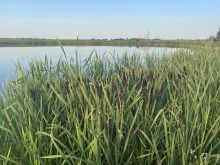It was what passes for political drama in agricultural politics.
On Dec. 11, 2003, federal agriculture minister Lyle Vanclief and Ontario agriculture minister Steve Peters appeared in the National Press Theatre in Ottawa to announce Ontario had signed onto the Canadian Agricultural Income Stabilization program, effectively launching the program.
Vanclief had cut short a trip to India to be on hand for the momentous occasion. It was his last day in cabinet; the new Paul Martin government was being sworn in the next day and with it came a new agriculture minister.
Read Also

Europe holds promise for Canadian lentils
Pulse Canada is trying to help boost lentil consumption in Europe, which is already the fourth largest market.
Peter’s signature before the cameras meant that two-thirds of the provinces representing at least 50 percent of farm production were in – the requirements for a national agreement.
The program took effect retroactive to the beginning of the 2003 CAIS year.
Eleven days later, Saskatchewan became the last province to sign on and minister Clay Serby said it was so the province would get what benefits it could from a program that had already started, even though Saskatchewan felt it was fatally flawed.
Almost immediately, the APF five-year budget of $1.1 billion per year was significantly overspent on CAIS alone, according to Agriculture Canada official Ellen Funk.
For the first three years of the program (to the end of the 2005 year), CAIS is expected to pay out more than $4.4 billion.
It almost certainly means that federal agriculture minister Chuck Strahl will have to go back to Treasury Board for more spending authority for the last two years of the program because just $700 million remains in the original financial commitment.
Funk said the program employs 230 staff who process claims and 30 who operate the toll-free CAIS information lines.














